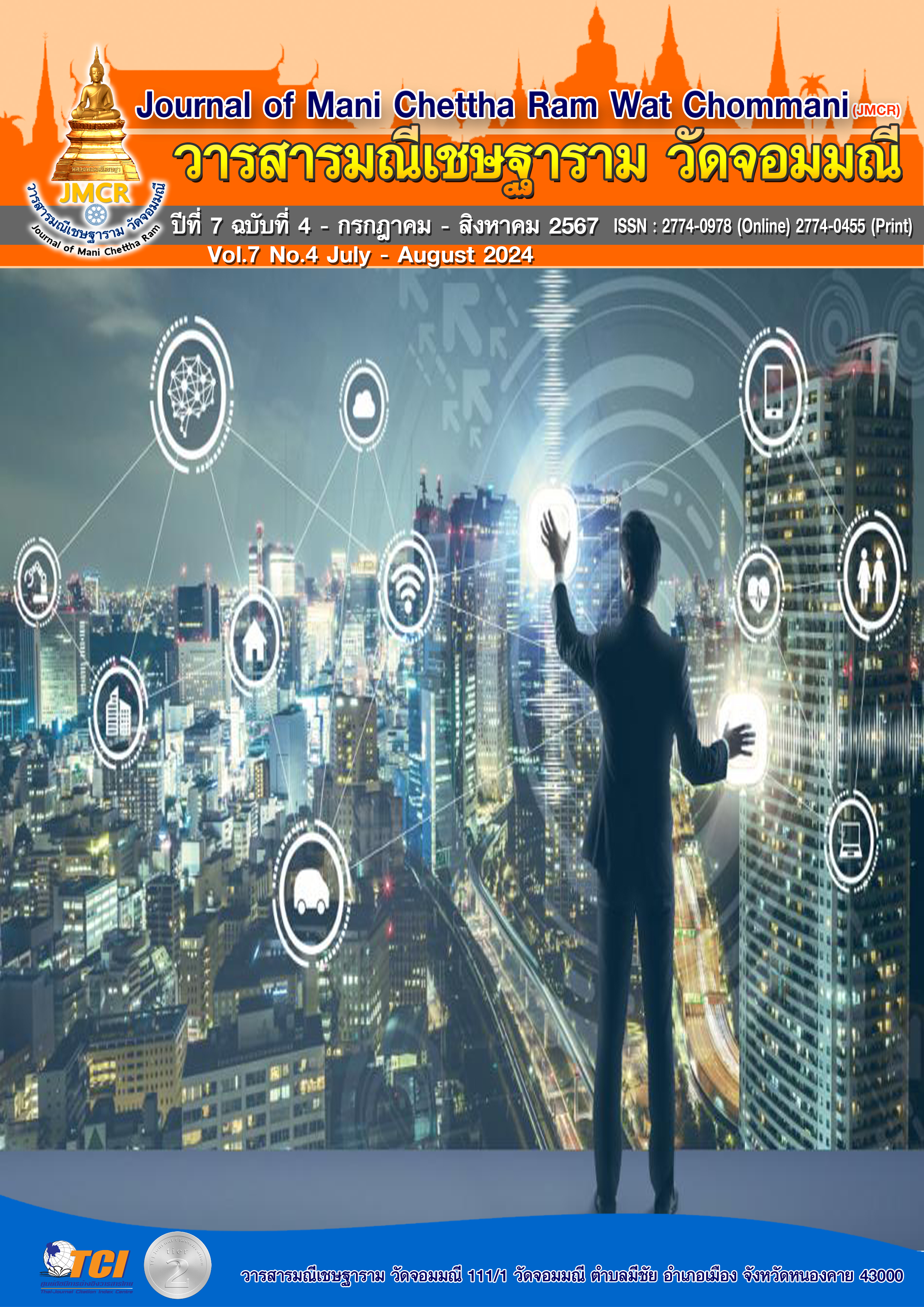DEVELOPING A PROACTIVE TEACHING MODEL ACCORDING TO KNOWLEDGE CREATION THEORY TO ENHANCE KNOWLEDGE AND DANCE SKILLS TOGETHER WITH A LEARNING ACTIVITY SET ON FOLK DANCE FOR 4TH GRADE STUDENTS
Keywords:
Active teaching model, Knowledge creation theory, Dance knowledge and skills, Learning activity sets, folk danceAbstract
This research aimed to 1) study basic information and needs for developing a proactive teaching model. According to knowledge creation theory 2) Create and find the effectiveness of active teaching methods. According to knowledge creation theory 3) Experiment with active teaching methods. According to the theory of knowledge creation 4) Evaluate the opinions of Grade 4 students towards learning with the active teaching model. According to knowledge creation theory. The sample group used in the study consisted of 30 students in Prathom 4/1 of Wat Prathumkanawat Municipal School (Niphatharinasutra), obtained by random sampling. The instrument used to collect data was a questionnaire. Data were analyzed by percentage, mean, and standard deviation. Independent t-statistics and content analysis.
The research results were found as follows; 1) Teachers and experts want to develop a proactive teaching model. According to knowledge creation theory to enhance knowledge and dance skills together with learning activity sets. Subject: Native dance 2) This teaching model is called the PCACE Model and the results of finding the effectiveness of the proactive teaching model. According to knowledge creation theory Efficiency was higher than the specified criteria. 3) Results of the trial using the proactive teaching model. According to knowledge creation theory After studying higher than before studying at the significance level of 0.05 for all aspects. 4) Results of evaluating the opinions of Grade 4 students towards the active teaching model. According to knowledge creation theory at the highest level.
References
กระทรวงศึกษาธิการ. (2551). หลักสูตรแกนกลางการศึกษาขั้นพื้นฐาน พุทธศักราช 2551. กรุงเทพมหานคร: โรงพิมพ์คุรุสภาลาดพร้าว.
กาญจนา อินทรสุนานนท์ และรุจี ศรีสมบัติ. (2552). รําวงมาตรฐาน. กรุงเทพมหานคร: ไทยวัฒนาพานิช.
ทิศนา แขมมณี. (2560). ศาสตร์การสอน : องค์ความรู้เพื่อการจัดกระบวนการเรียนรู้ที่มีประสิทธิภาพ. (พิมพ์ครั้งที่ 19). กรุงเทพมหานคร: จุฬาลงกรณ์มหาวิทยาลัย.
วณิชย์ชยา โพชะเรือง. (2555). การพัฒนาศูนย์การเรียนนาฏศิลป์ สำหรับนักเรียนชั้นมัธยมศึกษาปีที่ 1. ใน วิทยานิพนธ์การศึกษามหาบัณฑิต สาขาวิชาเทคโนโลยีและสื่อสารการศึกษา. มหาวิทยาลัยราชภัฏบุรีรัมย์.
วินัยธร วิชัยดิษฐ์. (2555) . การพัฒนารูปแบบการเรียนการสอนกลุ่มวิชาภูมิศาสตร์ที่ส่งเสริมคุณลักษณะอันพึงประสงค์ของนักศึกษาครุศาสตร์ สาขาสังคมศึกษา. ใน ดุษฎีนิพนธ์ปรัชญาดุษฎีบัณฑิต สาขาวิชาหลักสูตรและการสอน. มหาวิทยาลัยศิลปากร.
สำนักวิชาการและมาตรฐานการศึกษา. (2552) แนวทางการจัดการเรียนรู้ตามหลักสูตรแกนกลางการศึกษาขั้นพื้นฐาน พุทธศักราช 2551. กรุงเทพมหานคร: โรงพิมพ์ชุมนุมสหกรณ์การเกษตรแห่งประเทศไทย.
สำนักงานคณะกรรมการการศึกษาขั้นพื้นฐาน (2562). คู่มือบริหารจัดการ เวลา เรียน“ลดเวลาเรียน เพิ่มเวลารู้” ปีการศึกษา 2559. กรุงเทพมหานคร : สำนักงานคณะกรรมการการศึกษาขั้นพื้นฐาน.
หทัยชนันบ์ กานต์การันยกุล. (2556) . การพัฒนาชุดกิจกรรมการออกแบบทางศิลปะด้วยสมุดร่างภาพตามแนวคิดทฤษฎีคอนสตรัคติวิสซึม เพื่อส่งเสริมความคิดสร้างสรรค์ในนักเรียนชั้นมัธยมศึกษาปีที่ 4. ใน วิทยานิพนธ์ศิลปศาสตรมหาบัณฑิต สาขาวิชาทัศนศิลปศึกษา. มหาวิทยาลัยศิลปากร.
อารี พันธ์มณี. (2558). ฝึกให้คิดเป็น คิดให้สร้างสรรค์. กรุงเทพมหานคร: ต้นอ้อ.


